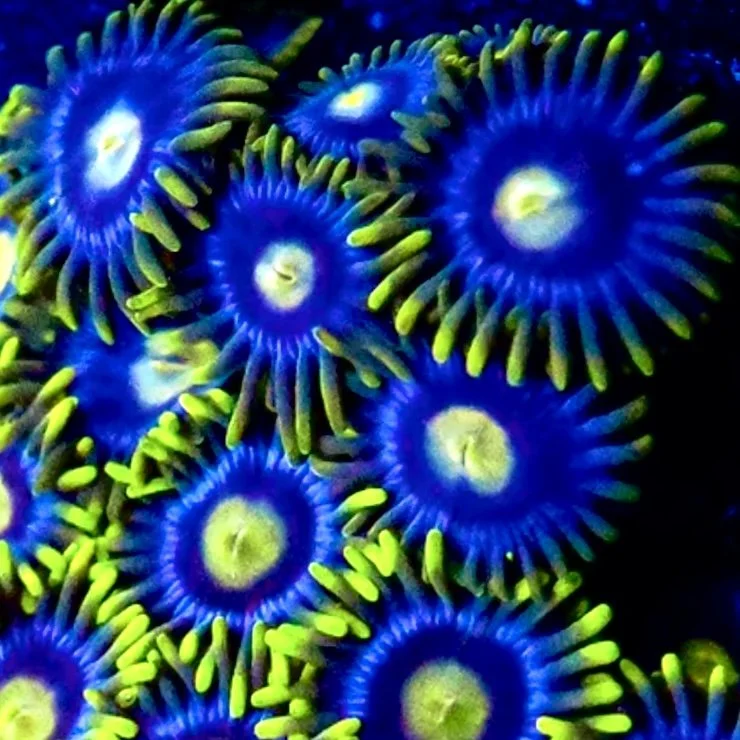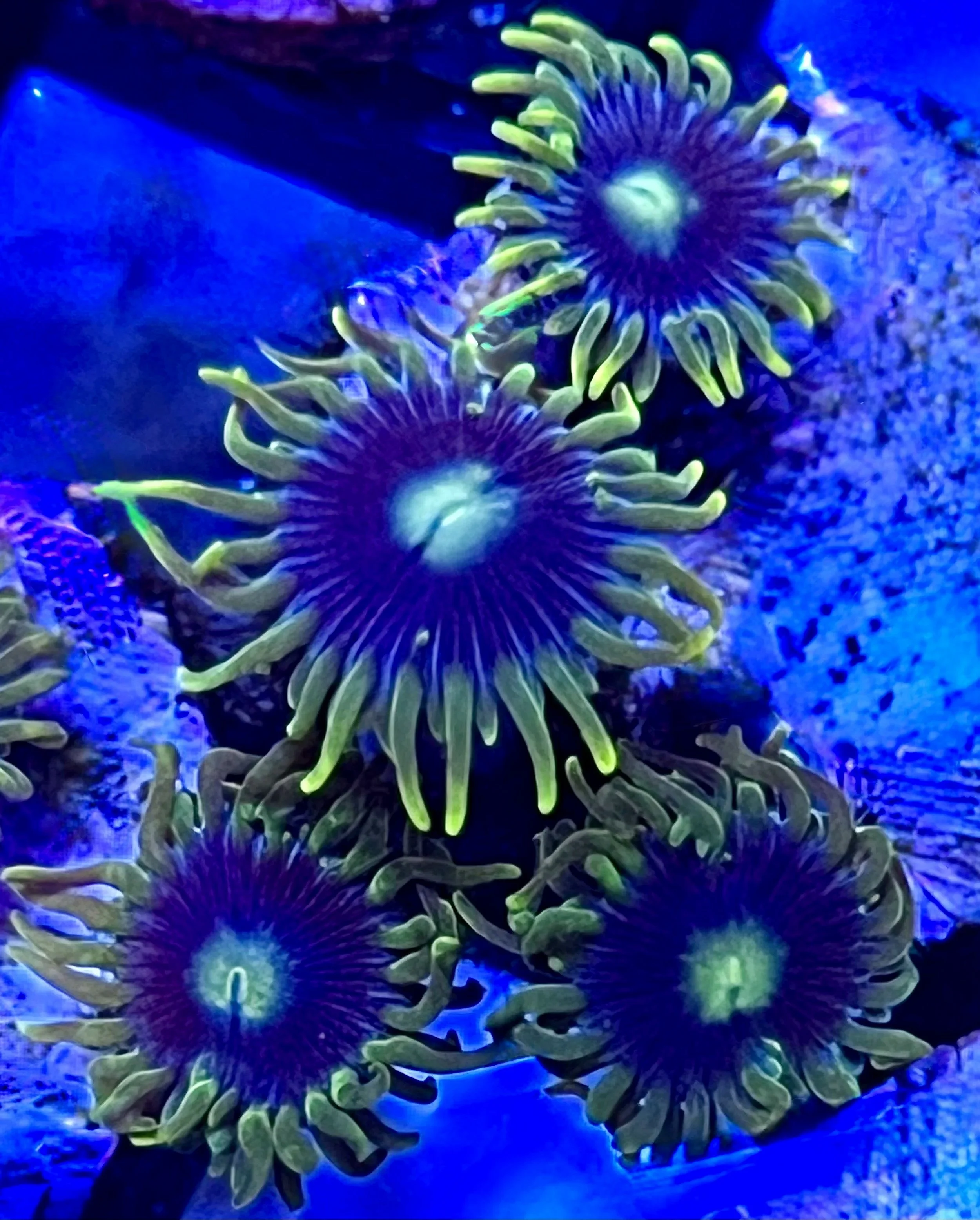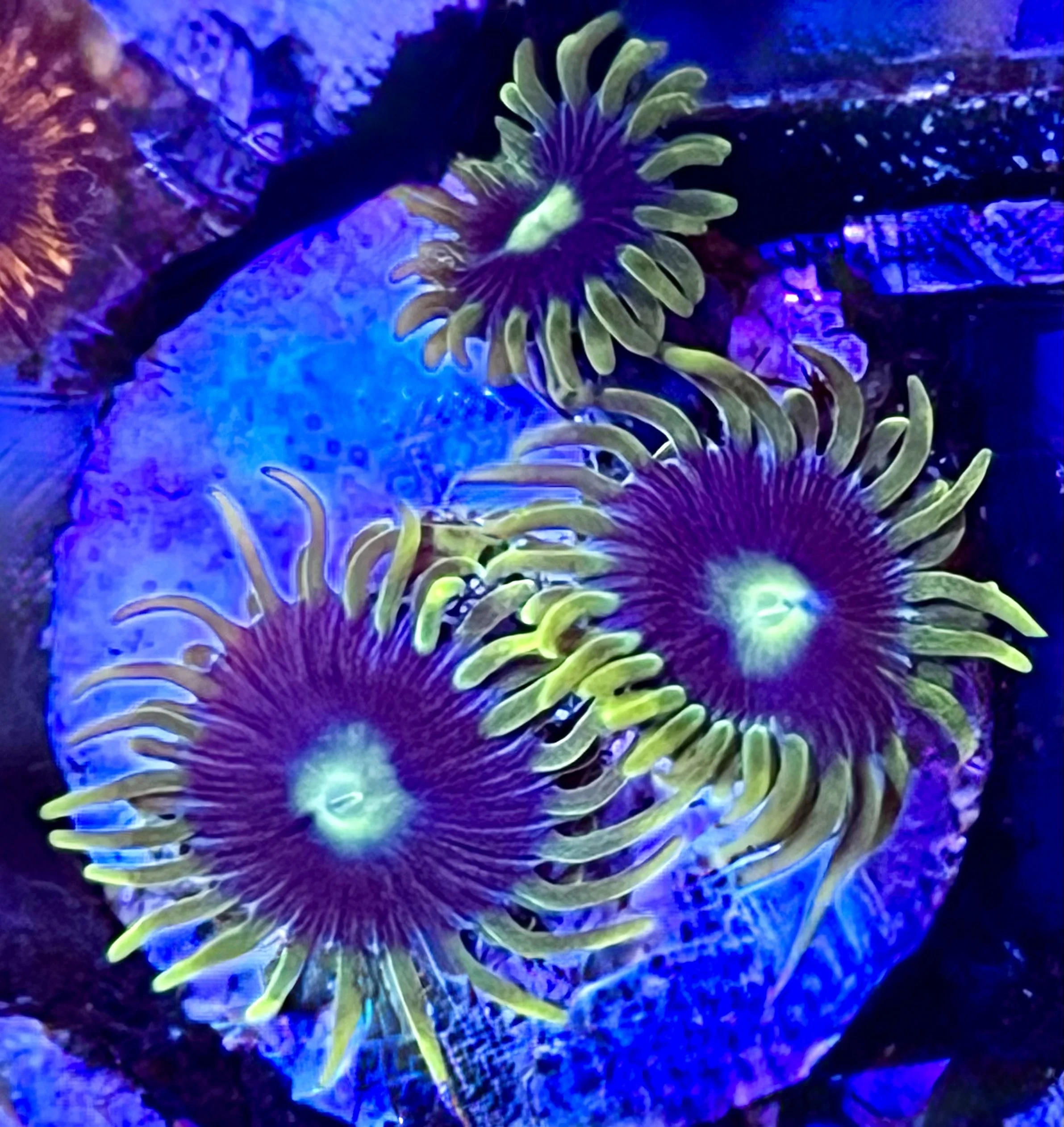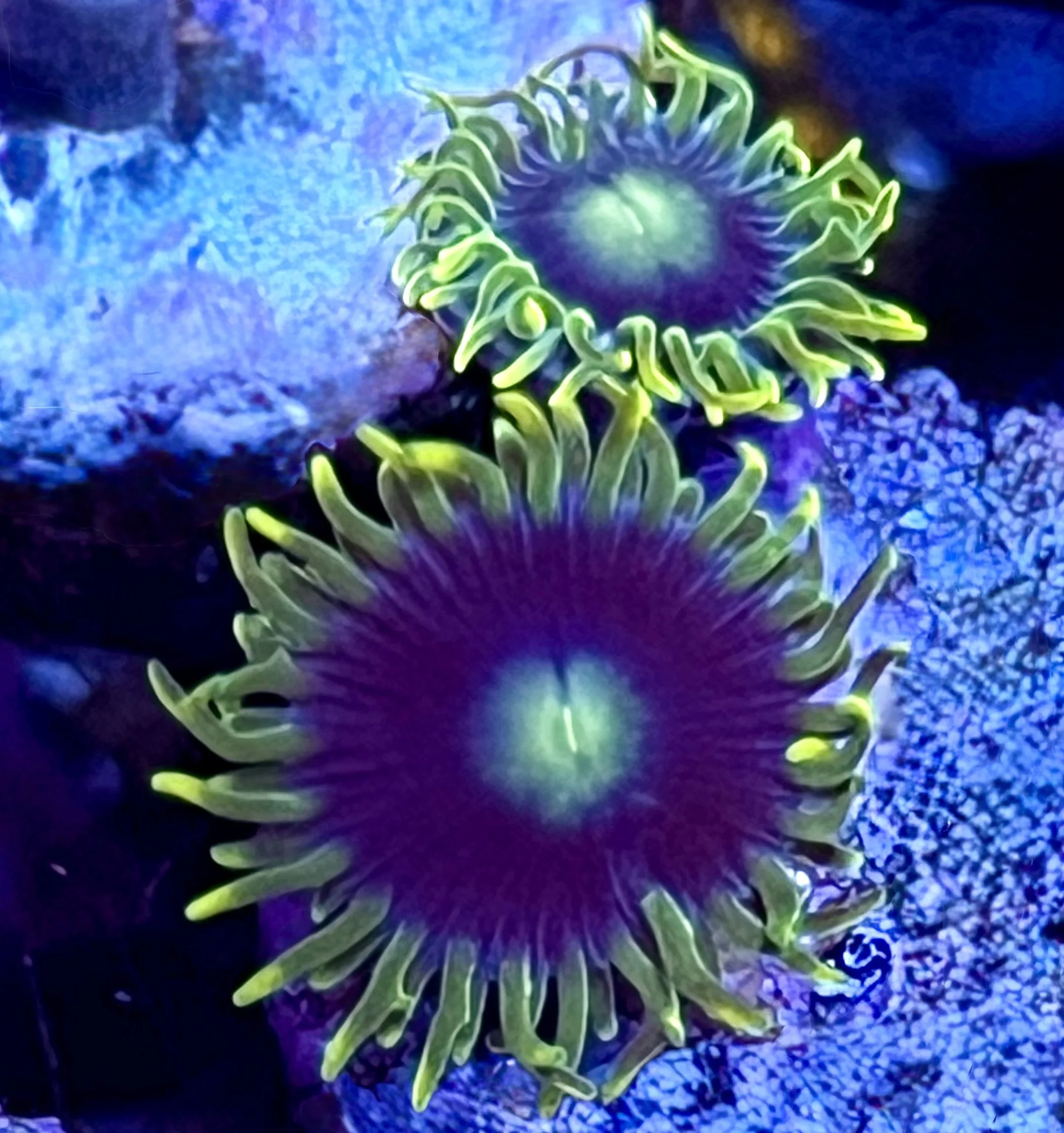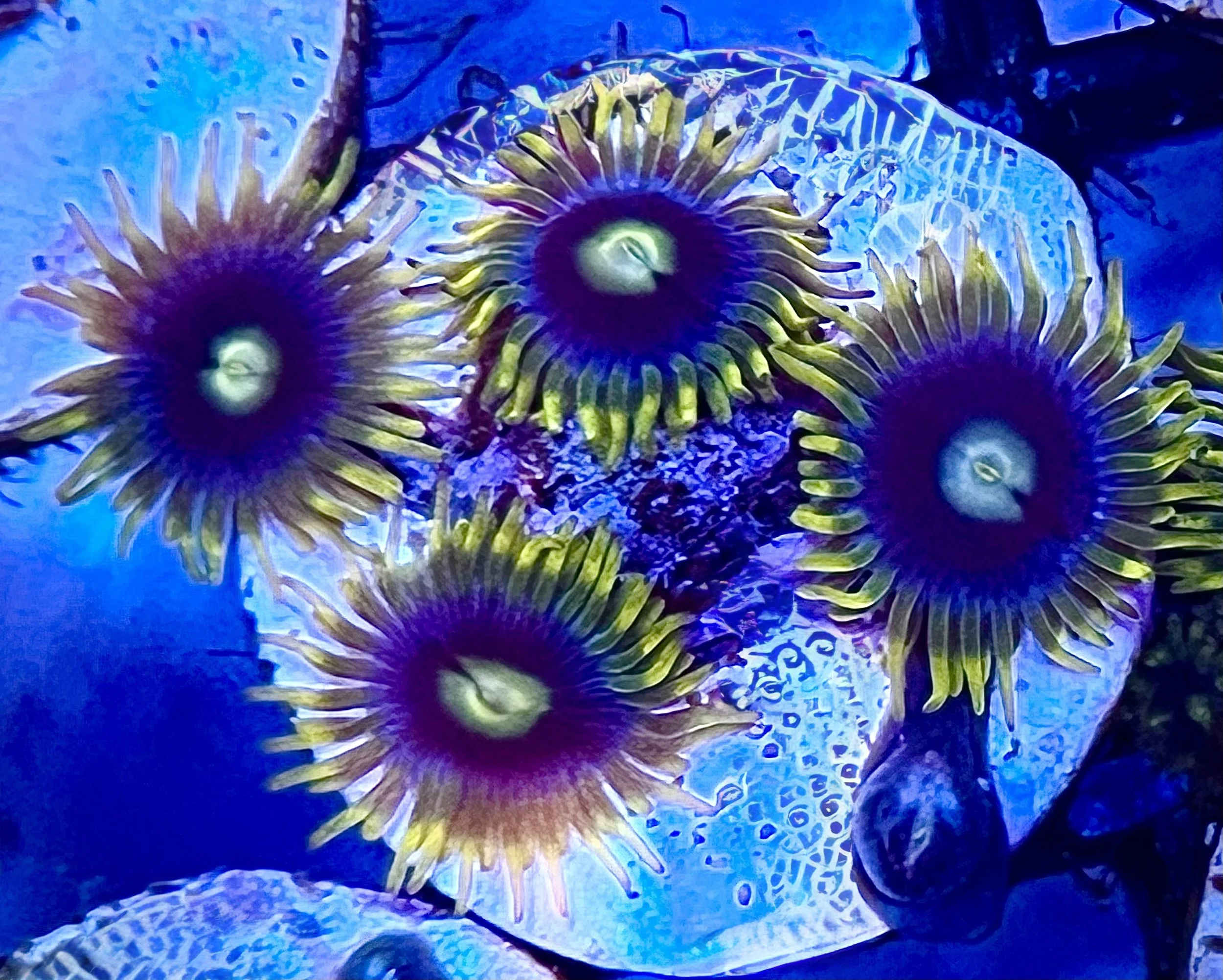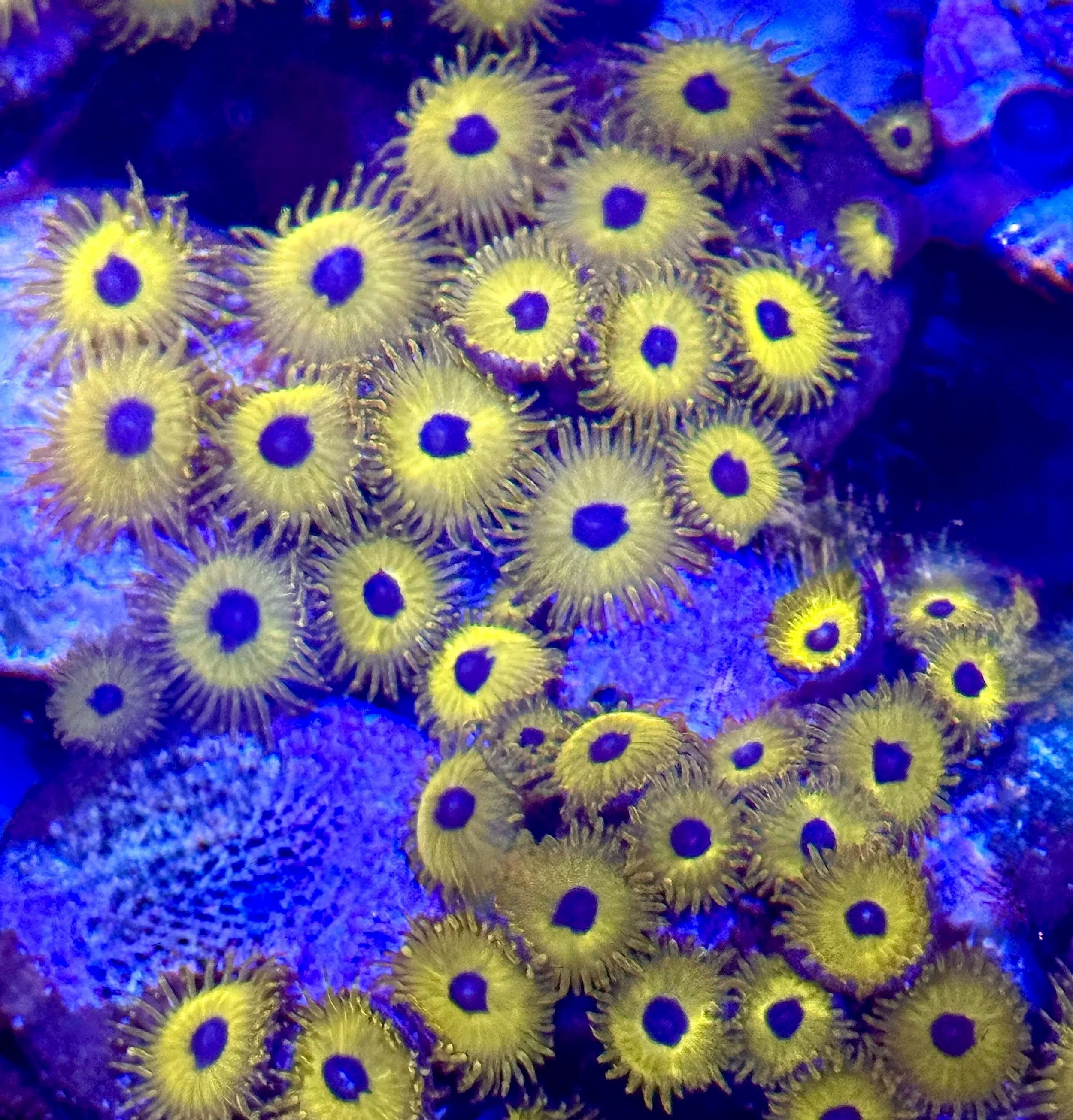Information
Zoanthids and Palythoa are a large group of corals in the reef keeping hobby. They come in an incredible range of colors and patterns making them very popular with both beginner hobbyists and rare coral collectors tracking down the uncommon color morphs. In terms of care, both Zoanthids and Palythoa are fairly easy to keep. They tolerate a wide range of lighting intensities and water conditions. Once settled in, zoas multiply quickl
Lighting
Zoanthids and Palythoa are not as demanding as other corals when it comes to lighting. They can be kept under a wide variety of lighting types, and are tolerant of both low and high light conditions. It is always wise however to acclimate new arrivals in lower light areas because it is far more likely to be damaged from overexposure than starve from underexposure.
Water Flow
Moderate to high water movement is recommended. Zoas and Palys benefit from enough flow to keep detritus from settling on them.
Feeding
While both Zoanthids and Palythoa polyps derive much of their energy from the products of their zooxanthellae, they do have the ability to capture prey. Palythoa seem to feed much more readily than their Zoanthid counterparts.

